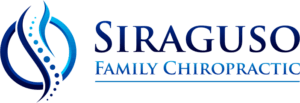Disc Bulge and Disc Herniation
A herniated disc and bulging disc are characterized as a protrusion or a tear in one of the cartilage spaces between the vertebrae. A spinal disc has a soft jelly like center called the nucleus (nucleus pulposus), that is encased in a rubbery and tough exterior, also known as the annular fibers (annulus fibrosus). A herniated disc, ruptured disc or slipped disc, occurs when a tear in the annulus pushes some of the jelly like center out. A disc bulge is a loss of resilience of the annular fibers, but not having torn completely. Disc issues are diagnosed through medical imaging using an MRI.
Signs and Symptoms
Depending on the part of the spine affected, the herniated disc and disc bulge can result in pain, weakness in the arm or leg, or numbness and tingling. Oftentimes, disc bulges do not present with any symptoms and can go asymptomatic for years. The lower back is most commonly affected, although, it can also occur in the neck. Signs and symptoms of a herniated disc/bulge depend on whether the disc is compressing on a nerve and where it is situated. It usually affects one side of the body. If the herniated disc is in the lower back, it will typically present with radiating pain in the thigh, calf or foot. If the problem is in the neck, it will present as pain in the shoulder, arm or fingers. The pain may worsen on moving in certain positions, sneezing or coughing. The pain can be describing as a burning and sharp sensation. Those who have moderate symptoms may complain of tingling and numbness in the affected body part. Those with severe symptoms may experience muscle weakness in the affected extremity and the inability to lift or hold items.
Chiropractic Treatment For Disc Issues
Studies have shown that Chiropractic care for disc issues can help people reduce their symptoms, manage and reduce pain, and promote and speed up the healing process. The most common techniques for treating disc issues are , spinal manipulation, mechanical manipulation, passive and active exercise therapy. Gentle spinal manipulation will help to restore proper joint motion and remove stress off the disc and impinged nerve. Mechanical manipulation such as spinal decompression, flexion distraction therapy, cervical traction, and inversion table will help to decompress the spine by pulling the vertebra apart to take stress off the affected region and nerve impingement. Exercise therapy is important to strengthen the muscles surrounding the disc issue. Strengthening the muscles will decrease the stress on the affected regions and stabilize the area. Disc issues may respond best when passive and active exercises are performed with a physical therapist to get the best results. At home therapies include prescribes stretches, walking, and Mackenzie exercises.
Disc bulges and disc herniations are injuries sustained to cartilage that lacks in blood supply. All the above listed therapies also help promote a nutritious blood supply to the affected region, but it is important to note that these conditions can take a long time to see results. If symptoms do not improve or even worsen during conservative care treatment then pain management using an injection, or even surgical intervention may be recommended.
At Home Therapy
See our article on lumbar inversion tables for more information on at home therapies. A teeter inversion table may be beneficial for this condition.
Schedule an Appointment
If you or any of your loved ones would like to schedule an appointment Click Here!
